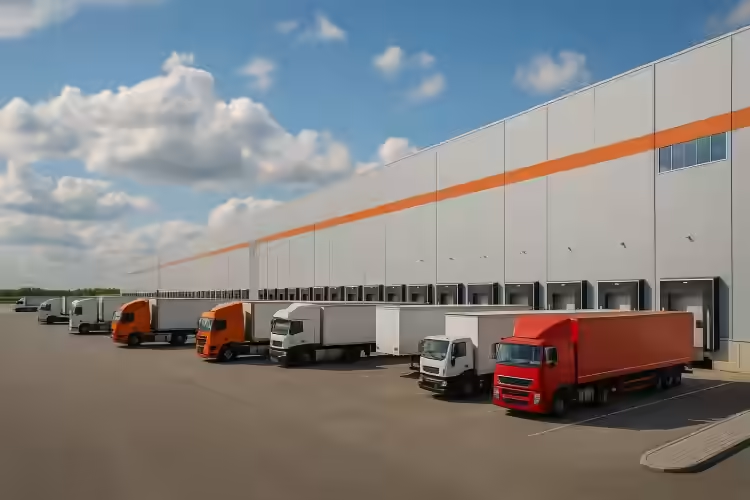Rising Warehouse Markets: What’s Hot in 2025
The industrial real estate world used to be fairly predictable. Stick close to major ports, rail hubs, and interstates. Build where land is cheap. Rinse and repeat. But 2025? Whole different ball game. Between e-commerce shifts, reshoring trends, laborshortages, and transportation bottlenecks, the “ideal” warehouse market has been redefined. It’s not just about square footage anymore—it’s about resilience, speed, and smart location strategy. Let’s take a tour through the U.S. and spotlight the most
surprising—and strategic—warehouse markets catching fire in 2025.
The Midwest Surprise
If you haven’t looked twice at the Midwest lately, you’re missing out. Places likeColumbus, Ohio and
Indianapolis, Indiana are no longer just flyover country—they’re freight-forwarding magnets. Why? It’s geography, plain and simple. From the middle of
Ohio, you can hit about 60% of the U.S. population within a day's drive. That’s gold in the age of next-day shipping. But it’s more than that. Labor is more affordable. Land is still reasonably priced. And infrastructure? Surprisingly strong.
Take
Columbus—Amazon’s been expanding there like crazy. So have UPS, FedEx, and third-party logistics firms. There's even a growing trend of converting old manufacturing facilities into sleek, high-tech warehouses with robotics and automated sortation
lines. And let's not forget
Kansas City, which saw industrial demand spike thanks to the new Kansas City International Airport terminal and a wave of investment from EV battery producers.
Texas Keeps Heating Up
No warehouse market piece is complete without talking aboutTexas—and in 2025, it’s not just
Dallas anymore. Sure,
Dallas–Fort Worth continues to crush it. It’s one of the top warehouse construction markets in the country. But what’s new is how much spillover we’re seeing into cities like
San Antonio and
Laredo. Laredo? Really? Yep. Thanks to the ongoing nearshoring boom in Mexico,
Laredo has become the hot border crossing for freight. Warehouses there aren’t just storage—they’re the first link in U.S. supply chains. And
San Antonio? It’s quietly becoming the affordable alternative for firms priced out of Austin and Dallas. You get proximity to Mexico, a growing population, and relatively low operating costs. Plus, Texas’ lack of state income tax and pro-business
environment doesn’t hurt either.
Southeast Surge
The Southeast is absolutely booming. And no, we’re not just talking about the coastal cities. Yes,Savannah, Georgia is still a powerhouse port—boasting one of the fastest-growing container ports in the U.S. But what’s new in 2025 is how inland cities like
Greenville, South Carolina and
Chattanooga, Tennessee are stepping into the spotlight. These cities offer proximity to ports and access to key highways like I-85 and I-75. That’s huge for regional distribution. And let’s not forget the “car corridor.” Automakers and their
suppliers—from BMW to Hyundai—are doubling down in the region. That industrial investment fuels demand for logistics, just-in-time warehousing, and light assembly spaces. What’s really wild is how fast this growth is happening. Vacancy rates in some of
these cities are below 3%, and developers are scrambling to keep up.
The Western Warehouse Revival
You might think the West Coast is yesterday’s news for industrial space—especially with sky-high land prices and zoning headaches inLos Angeles. But the reality? The West is evolving. We’re seeing a major inland shift to places like
Reno, Nevada and
Salt Lake City, Utah. These are what we’d call “20-hour cities” with 24-hour capabilities—urban enough for talent, but chill enough for trucks.
Reno is a case study in warehouse rebirth. It’s become a magnet for West Coast e-commerce firms looking to escape California’s operating costs but still serve the region quickly. Plus, you’re a quick run from the Bay Area via I-80. Meanwhile,
Salt Lake City is getting a lot of buzz for its tech growth, clean energy logistics, and mountain-adjacent livability that draws a younger workforce. And don’t sleep on
Phoenix, Arizona. Industrial absorption there hit record highs thanks to a flood of semiconductor-related development and distribution tied to new chip fabs.
Don’t Sleep on Secondary Markets
Everyone loves to talk about the big metros, but here’s the thing: 2025 is the year of the underdog. We’re seeing real momentum in places like:Allentown, Pennsylvania – Tucked away in the Lehigh Valley, it’s become a key Northeast alternative to pricier Philly or Jersey.
Des Moines, Iowa – Quietly gaining traction as a mid-America distribution point with solid interstates and a growing population.
Fresno, California – Inland California is heating up due to port congestion and state incentives for agri-logistics. These aren’t just “overflow” markets anymore. They’re strategic hubs in their own right—offering faster permitting, easier
site selection, and friendlier political climates. Think of it this way: why fight for space in overbuilt metros when you can go where the red tape’s thinner and the ROI’s fatter?
So What’s Next?
The warehouse game in 2025 is all about agility. If your location strategy is still clinging to old norms—"must be near a major airport" or “can’t go inland”—you’re probably missing out. What’s hot now? Sites near electric vehicle corridors and chipplants Warehouses doubling as micro-fulfillment centers Secondary markets with quick port access Labor-accessible zones with good highway connectivity This is the year when "where" becomes as important as "what." It’s no longer just about storing stuff—it’s
about outpacing the competition with smarter positioning. So if you’re looking to make moves in industrial real estate, now’s the time to map your next market. And who knows—you might just find your golden opportunity in a place nobody expected.

